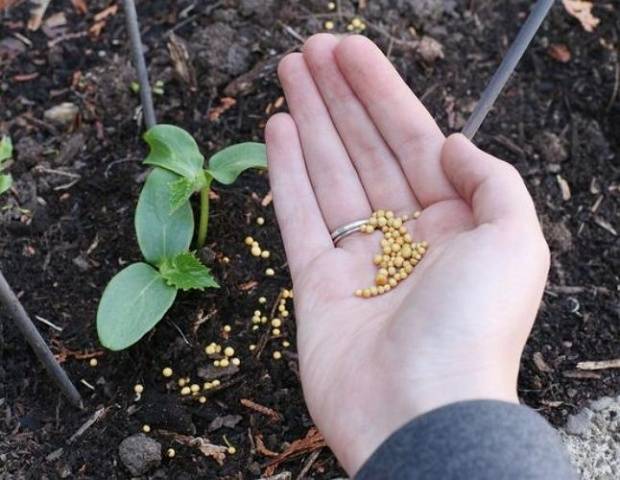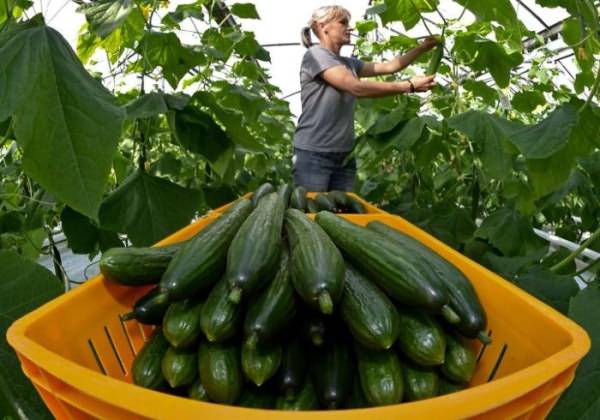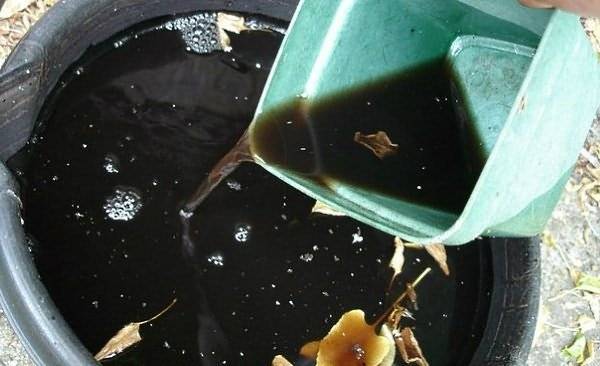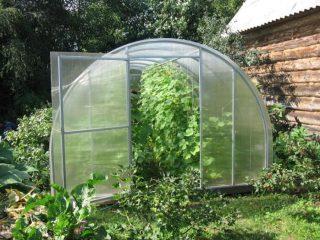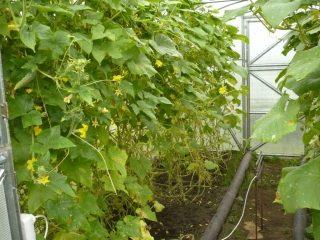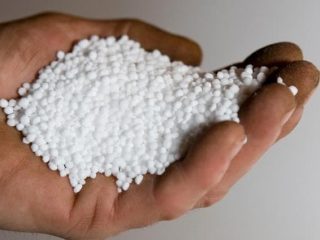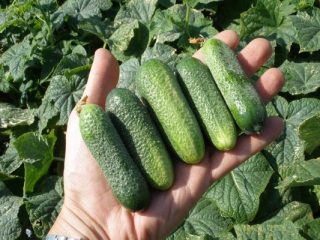Content
Almost all gardeners grow cucumbers on their plot. And they know firsthand that it is very difficult to get a good harvest without additional fertilizing. Like all vegetable crops, cucumbers require minerals and organic matter to actively grow and fruit. Many people are interested in which minerals fertilizers for cucumbers use. You also need to know what fertilizer should be applied at each stage. growth this culture.
When to fertilize
Healthy and strong cucumbers can only be grown with the correct feeding regime. Fertilizers will help cucumbers grow well and set fruit. During the entire growth period they are fed 3 or 4 times. To do this, you can use both organic matter and minerals. Each gardener decides for himself what he likes best. But you still need to adhere to the basic rules:
- the first feeding is done 2 weeks after planting the cucumbers;
- the next feeding is necessary for the plant during the appearance of flowers;
- the third time nutrients are added during the formation of ovaries;
- The fourth and final feeding is optional.It is done for the purpose extend the fruiting period during mass formation of fruits.
In this case, it is necessary to monitor the amount of fertilizer applied. Remember that excess minerals can be bad for plants. If the soil on your site is already quite fertile, then it is not necessary to carry out all four feedings; you can get by with only two. It is recommended to use both organic and mineral substances for fertilizer, alternating them with each other. This technology will help you achieve better results.
Fertilizing cucumbers can be divided into 2 types:
- Root.
- Foliar.
Foliar feeding are carried out when plants have poor absorption of nutrients and the appearance of various diseases. For example, due to a lack of nutrients in cold rainy weather, plants are sprayed with special mixtures and solutions.
Fertilizing cucumbers with mineral fertilizers
The use of mineral fertilizers along with watering and compliance with the rules of agricultural technology will help plants quickly develop green mass, A also form high-quality fruits. To carry out the first fertilizing, use the following compositions of mineral fertilizers.
Feeding cucumbers with urea:
- 45–50 G urea;
- 10 liters of settled water.
The solution is mixed and used for irrigation. For one seedling you will need about 200 ml of the prepared mixture. As a result, this amount of solution is enough to water more than 45 sprouts.
Mixing these substances leads to the fact that the main part of the nitrogen simply evaporates.
Ammophoska is also suitable for the first feeding.It is manually distributed over the soil surface between the rows of cucumbers. Then the soil is loosened, burying the substance deep. This feeding is effective on any type of soil, especially clay and sand. Ammophoska has a number of advantages that set it apart from other mineral fertilizers. It does not contain nitrates and chlorine, so the harvest will be exclusively natural and harmless. It contains a large amount of nitrogen, phosphorus and potassium. This fertilizer is used both in open ground and in greenhouses.
During the flowering period fertilize cucumbers not necessary. Fertilizer should be applied only if signs of disease or insufficient amounts of microelements are visible. You can also stimulate the growth of seedlings if it has slowed down. To do this, use the following mixture:
- 10 liters of water.
- 1 tablespoon of superphosphate.
- 0.5 tablespoon of potassium nitrate.
- 1 tablespoon of ammonium nitrate.
The following feeding option is also suitable:
- A bucket of warm water.
- 35–40 grams of superphosphate.
Plants are sprayed with similar solutions in the morning or evening so that the sun's rays do not fall on the leaves.
Some gardeners use it for feeding boric acid. It fights well against fungi and rotten diseases. To prepare such a fertilizer, you need to mix 5 grams of acid, potassium permanganate on the tip of a knife and 10 liters of water in one container. All ingredients are mixed and the plants are sprayed with this solution.
During the period of active fruiting, cucumbers are fed with potassium nitrate. To do this, dissolve 10–15 grams of saltpeter in 5 liters of water.This fertilizer can strengthen the root system of cucumbers and also helps plants obtain the necessary nutrients from the soil. At the same time, saltpeter protects the roots from rot.
To spray plants during fruiting, use a urea solution. This procedure will help cucumbers take longer to form ovaries and, accordingly, bear fruit longer.
Fertilizing cucumbers with organic fertilizers
Organic fertilizers for cucumbers must be applied throughout their growth. At the same time, it is important to know the limits and follow the regime. Too much organic matter can lead to the fact that the foliage of cucumbers will begin to develop very rapidly, and the ovaries will not appear or there will be few of them. But by wisely using fertilizer prepared at home, you can strengthen the plants and increase the amount of harvest. For these purposes, various available means are used. For example, cucumbers have a good effect Yeast. They can increase plant resistance to various diseases, and also strengthen the root system and sprouts in general. The quality and quantity of cucumbers with this feeding increases significantly, and the taste improves.
Yeast contains almost all necessary microelements for cucumbers:
- nitrogen;
- phosphorus;
- potassium;
- iron;
- manganese.
To feed the cucumbers with these nutrients, you need to dissolve 1 pack of yeast in a bucket of water. The prepared mixture is left for a day to ferment. Then the bushes are watered with this solution. To water 1 seedling, you will need a liter of liquid.You can also add other minerals to this solution. This feeding can be done no more than 2 times a month.
It is very effective to use a solution of ordinary wood ash to fertilize cucumbers. To do this, add about 200 grams of ash to a bucket of water at room temperature, and then mix everything thoroughly. Each bush is watered with 1 liter of this mixture. You can also use dry ash. It is simply sprinkled on the soil around the cucumbers. This procedure will serve as an excellent prevention of fungal diseases of the root system.
Many gardeners praise fertilizer from chicken manure. For this method, both fresh and rotted droppings are used. Before using the solution, the soil should be thoroughly watered so that the droppings do not cause burns to the plants. For 10 liters of water you will need 0.5 kg of chicken manure. Water the cucumbers with this solution at the root at the rate of 800 ml of liquid per 1 bush.
You can also prepare a bread infusion to feed cucumbers. Stale food is placed in an empty bucket bread, it should occupy more than half the capacity. Then the remaining bread is poured with water, pressed down with pressure, and left in a warm place for a week to allow the solution to ferment. After this, the mixture is diluted with water in a ratio of 1/3. Now the fertilizer is completely ready and you can start watering.
Feeding based on onion peels will help not only strengthen the plants, but also increase resistance to diseases. To prepare the infusion, you need to pour 200 g of husk into a bucket of water and put it on the fire until it boils. After this, the infusion should cool completely. To water 1 plant you will need a liter of this infusion.
Feeding cucumber seedlings
When growing cucumbers in open ground, first the seedlings are planted. In warm climates or greenhouse conditions this is not necessary. Seedlings are grown for about a month. At this time, she also needs nutrition with minerals. The future harvest depends on how strong and healthy the seedlings are.
To feed cucumber seedlings, mixtures based on superphosphate and nitrate are used. Cow dung can be used as an organic fertilizer. When feeding cucumber seedlings, it is very important to fertilize the top layer of soil. The fact is that cucumber seeds are planted shallowly, and the roots of this plant are compact. Because of this, seedlings may have difficulty extracting nutrients from the soil.
Cow dung and ash can be added to the soil for seedlings. The components are mixed in the following proportions:
- 1m2 soil;
- 7 kg of manure;
- 1 glass of ash.
And to feed the seedlings themselves, solutions are prepared from superphosphate, saltpeter or the same manure. You can also purchase ready-made fertilizers for cucumbers in specialized stores. Such mixtures do not contain nitrates and are completely safe for human health and life.
Feeding during active growth of cucumbers
Plants require nitrogen for normal growth. While the cucumbers have not yet begun to bloom and bear fruit, they should be fertilized using fertilizers containing nitrogen. This is done in the following ways:
- By watering.
- Spraying.
- Using a drip irrigation system.
During the period of active growth, plants need phosphorus.This element is responsible for the development of the root system, the growth of green mass, and the setting and ripening of fruits. It should be added in small portions, but often, since cucumbers need it throughout the entire growing season.
With the help of potassium, plants can easily receive nutrients. It is potassium that is responsible for transporting microelements from the roots to other parts of the plant. With normal development, cucumbers in open ground are fed only 2 times. But greenhouse vegetables will have to be fertilized up to 5 times per season.
Feeding during the fruiting period
When small cucumbers appear on the bushes, the composition of the feed should be changed. Now cucumbers simply need magnesium, potassium, and nitrogen. But it is important to remember that at this time the amount of nitrogen should be reduced, but potassium, on the contrary, should be increased.
Potassium nitrate not only has a positive effect on fruit growth, but also improves their taste. Such fruits will not taste bitter, which often happens with a lack of mineral fertilizers. Bitterness can also appear as a symptom of an excess of phosphorus and potassium. Feeding the bushes during this period will contribute to the appearance of additional ovaries, making fruiting longer.
Signs of micronutrient deficiencies and deficiencies
Due to improper fertilization of cucumbers, growth may be disrupted and the appearance of the bushes may deteriorate. Signs of a malnutrition include the following:
- Too much nitrogen will delay flowering. There are also a large number of leaves on the stems, but very few flowers.
- Excess phosphorus negatively affects the leaves.At first they turn yellow, and then they can become completely stained and crumble.
- A large amount of potassium in the feed prevents the plant from receiving the necessary nitrogen. Because of this, the growth of the bush is delayed.
- Excess calcium is manifested by the appearance of pale spots on the leaves.
Having noticed the first signs of nutritional disturbances, you should immediately stop applying fertilizer or change its composition depending on the needs of the plants.
Conclusion
By feeding cucumbers using the methods described in this article, you can achieve excellent results and grow a wonderful crop of cucumbers on your plot.

